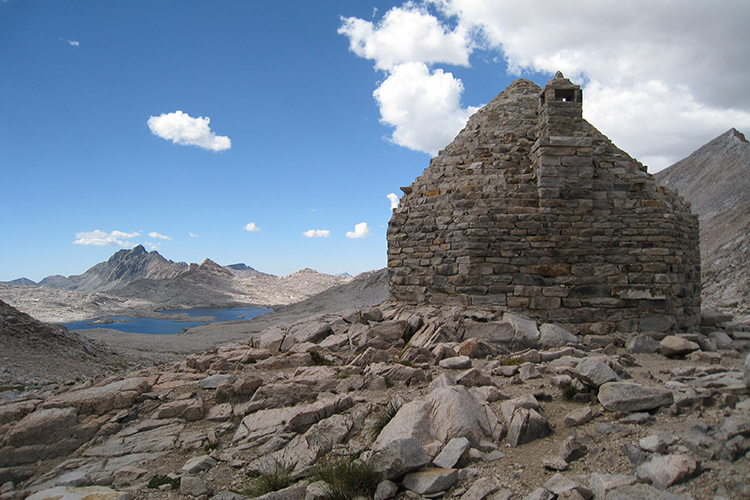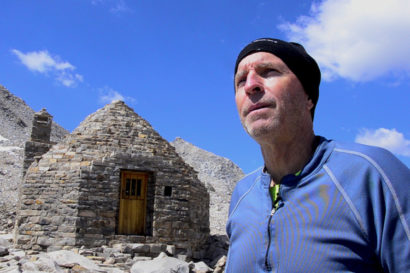One Berkeley alumnus is determined to see the Sierra Nevada Muir Hut — and the scenic 200-mile trail it sits on — recognized as a National Historic Landmark. (UC Berkeley video by Roxanne Makasdjian and Stephen McNally)
March 3, 2018 - By Will Kane - UC Berkeley alumnus Doug Harnsberger was hiking along California’s scenic John Muir Trail a few years ago when he came across a stone hut at the top of 11,955-foot Muir Pass, inside Kings Canyon National Park.
Harnsberger, a 1977 graduate in environmental design and architecture, is a trained historical architect and immediately knew the shelter was something special – he just didn’t know anything about it.
Almost as soon as he returned home to Pennsylvania, he started learning as much as he could about the hut.
The effort took him to UC Berkeley’s Bancroft Library, where he found the original 1930 blueprint for the building by Henry Gutterson, a 1905 graduate of Berkeley who was commissioned to build the hut by the Sierra Club.
Harsnberger also pushed the National Park Service to place the hut on the National Register of Historical Places, a listing of buildings and places the government deems worthy of preservation for their historical significance.
Research is now underway to get the 16-foot-by-16-foot octagon hut – and the entire 210-mile John Muir Trail – recognized as a National Historic Landmark, which would place the Muir Hut among the country’s most significant structures. Other National Historic Landmarks include the White House and the Frank Lloyd Wright’s Robie House in Chicago.

The hut was commissioned in 1930 to honor John Muir. It’s architecture is reminiscent of the Italian Trullo Hut design tradition. (Courtesy house)
“We have the architecture of a medieval stone structure from southern Italy showing up on the Muir Pass,” Harnsberger said. “This is a mountaineer’s version of that kind of shrine.”
Recognizing the hut as a landmark would honor Muir, who is generally considered to be the father of the National Park System, and protect the hut and trail for generations to come, Harnsberger said.
“A building does not last without maintenance,” Harnsberger said. “So far, this structure has lasted (almost) 100 years without maintenance, but it might not last another 100 years.”
Source: UC Berkeley

